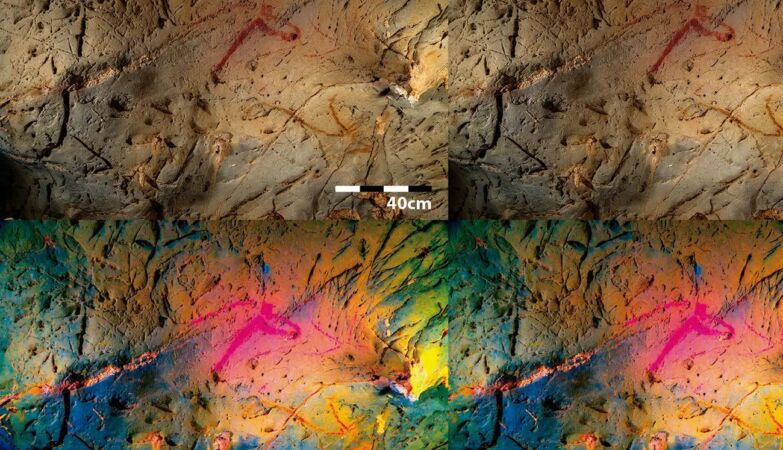Scientists uncover hidden ancient drawings of animals in a Paleolithic cave using a technique to make them look 3D
Marianne Guenot, Grace Eliza Goodwin, and Jenny McGrath Sep 8, 2023, 6:32 PM CDT

The image of a horse in the La Pasiega Cave shown without and with DStretch software processing. Raquel Asiain/Pedro Saura
- Archaeologists found three new drawings from tens of thousands of years ago in a Spanish cave.
- They used a visual technique called stereoscopic photography to see the cave art like never before.
- The technique made the art look 3D, which helped the archeologists make their new discovery.
Archaeologists have discovered new Paleolithic animal paintings from tens of thousands of years ago hidden in a cave using an updated photography technique.
There are over 700 paintings lining the rock walls of the Cave of La Pasiega in north-central Spain, which anthropologists first discovered in 1911. For the most part, scientists viewed them as two-dimensional drawings. But the ancient artists actually incorporated bumps, dips, and crevices from the rocks into their art that can't be fully appreciated in 2D.
A crack in the wall might define the horse's chest, for example. Tracings or sketches might miss nuances in the rocks that 3D images can bring to life
An old technique reveals new details
Dating back to the 1800s, stereoscopic photography itself is not new. Perhaps its most recognizable use is in View-Masters — the children's toy that presents separate images to the left and right eyes, creating a 3D illusion.
More:
https://www.businessinsider.com/scientists-uncover-ancient-three-dimensional-cave-drawings-2023-9
